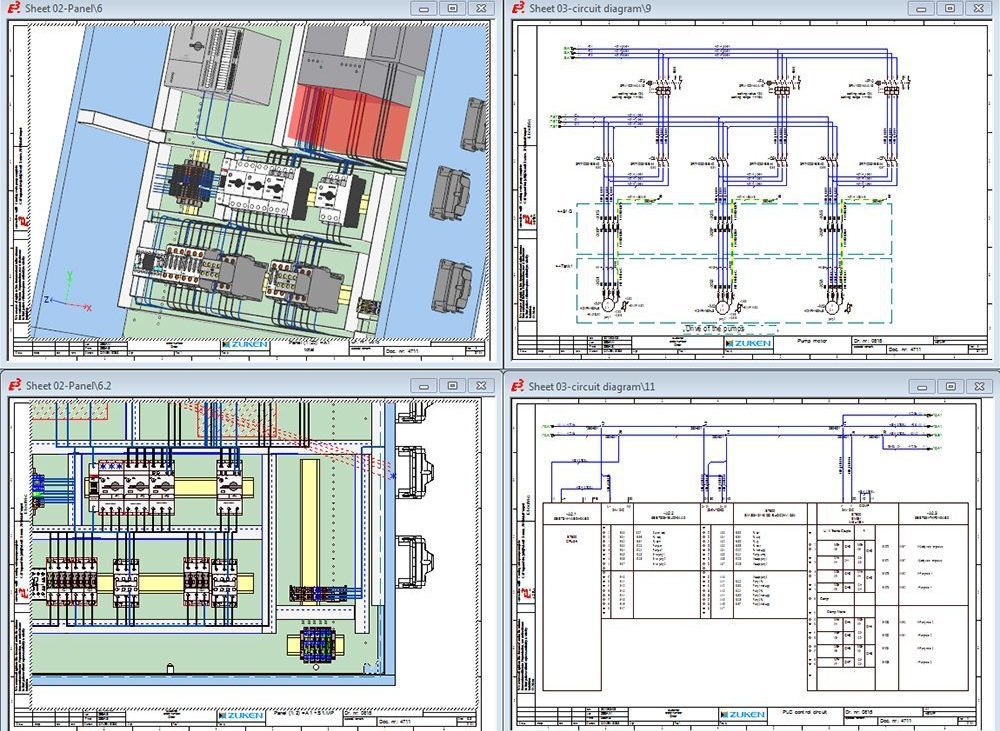Tailored Electrical Load Calculation Services for Commercial and Industrial Facilities
Tailored Electrical Load Calculation Services for Commercial and Industrial Facilities
Blog Article
Ingenious Electric Design Services for Modern Infrastructure
The development of modern facilities requires cutting-edge electrical design solutions that not only improve functional performance but likewise address sustainability challenges. As urban settings expand progressively intricate, integrating technologies such as smart grids and renewable power resources comes to be extremely important. These improvements not just guarantee to maximize energy intake however also foster strength against future demands. The landscape of electric design is undertaking rapid transformation, motivating a more detailed examination of emerging patterns and their ramifications for lasting framework stability. What might the future hold for those that accept these cutting-edge techniques?
Value of Ingenious Electric Design
Ingenious electric design plays a vital role in contemporary framework, affecting not just effectiveness but also sustainability. As cities develop and the need for power increases, the requirement for innovative electrical systems becomes paramount. These systems must not just satisfy existing demands however likewise expect future development and technical advancements.
A well-executed electric design can substantially decrease power intake, consequently reducing functional costs and lessening environmental impact. By integrating renewable power resources, such as solar panels and wind generators, innovative styles can boost energy self-reliance and durability. Wise grid modern technologies allow for real-time surveillance and administration of energy circulation, enhancing efficiency and reducing waste.
Safety is an additional critical aspect of electrical design. Implementing sophisticated technologies and rigorous standards can mitigate risks related to electrical failings, guaranteeing a safe and secure environment for businesses and homeowners alike. Furthermore, cutting-edge layouts promote versatility, allowing infrastructures to incorporate arising technologies perfectly.
Trick Trends in Electrical Design
As the landscape of electrical design continues to advance, numerous vital fads are forming the future of the market. One significant pattern is the integration of clever innovation right into electric systems. The proliferation of the Web of Points (IoT) has enabled real-time monitoring and control of electrical tools, boosting performance and promoting anticipating maintenance.
One more pattern is the expanding focus on modular design. This technique enables scalable and flexible services, enabling facilities to adjust to transforming requirements without considerable restorations. Additionally, using sophisticated simulation devices and Structure Info Modeling (BIM) is ending up being significantly widespread, improving the design procedure and boosting collaboration amongst stakeholders.
In addition, developments in products scientific research are causing the advancement of lighter, extra durable, and energy-efficient parts. This innovation is especially vital for high-performance buildings and infrastructure jobs.
Finally, there is a significant shift towards data-driven decision-making - industrial electrical design. Leveraging data analytics aids developers maximize systems for efficiency and cost-effectiveness. Together, these fads symbolize a transformative era in electric design, improving functionality, sustainability, and strength in modern-day framework
Sustainable Energy Solutions
Lasting power solutions are progressively becoming a vital emphasis in electric design, showing a more comprehensive commitment to ecological duty and source performance. These solutions intend to lessen ecological effect while enhancing energy consumption in different facilities, from household structures to large commercial facilities.
Among the leading approaches involves the integration of renewable resource sources, such as solar panels and wind generators, into electric systems. This find this not just reduces dependence on fossil gas however also boosts energy resilience. In addition, innovative energy storage space systems, such as advanced batteries, allow effective monitoring and circulation of power, making certain that excess power created during height production can be used during high demand durations.
Furthermore, energy-efficient design practices are being embraced to boost total system efficiency. This consists of using energy-efficient lights, a/c systems, and wise structure modern technologies that keep track of and adapt power usage based on tenancy and ecological problems.
Smart Grid Technologies
The application of sustainable power remedies normally leads to the expedition of clever grid modern technologies, which play a pivotal function in updating electrical systems. Smart grids take advantage of advanced communication innovations and information analytics to improve the dependability, performance, and sustainability of electricity circulation. By integrating electronic innovation with conventional grid facilities, these systems facilitate real-time monitoring, automated control, and improved decision-making capacities.
Among the essential features of clever grids is their capacity to fit renewable resource resources, such as solar and wind power. This flexibility not only decreases dependency on nonrenewable fuel sources yet also enables a much more decentralized power manufacturing design. Clever grids make it possible for need reaction programs, where customers can readjust their power usage based on real-time pricing, thereby advertising energy preservation and decreasing peak load demands.
Furthermore, clever grid technologies improve grid resilience by allowing quicker recognition and resolution of outages, eventually minimizing downtime. With anticipating maintenance and analytics, utilities can boost and maximize operations solution shipment. As cities and areas continue to develop, wise grid image source modern technologies are essential for constructing a efficient and lasting electrical infrastructure that meets the demands of contemporary culture.

Future-Proofing Infrastructure
To guarantee long-term practicality and versatility, future-proofing framework is crucial in the rapidly evolving landscape of electric design services. As modern technology developments and energy needs change, it is essential that electrical systems are designed with flexibility in mind. This entails integrating scalable remedies that can fit future upgrades without necessitating substantial overhauls.

Furthermore, sustainability must be a keystone of future-proofed styles. Using sustainable energy sources, such as solar and wind, and optimizing energy effectiveness lower reliance on nonrenewable fuel sources, straightening with international initiatives to battle environment modification.
Conclusion
By prioritizing sustainability, efficiency, and adaptability, these solutions resolve the developing demands of energy systems. The assimilation of clever grid technologies and lasting energy solutions boosts strength and reduces operational costs.
A well-executed electrical design can significantly reduce energy consumption, therefore lowering operational costs and lessening ecological impact. By go to these guys incorporating sustainable power resources, such as solar panels and wind turbines, cutting-edge designs can improve power self-reliance and durability. Furthermore, innovative power storage space systems, such as innovative batteries, make it possible for efficient monitoring and circulation of power, making certain that excess power produced during peak manufacturing can be utilized throughout high demand durations.
Smart grids enable need action programs, where customers can change their energy usage based on real-time prices, consequently promoting energy conservation and lowering peak load needs. (electrical load calculation)
As innovation advancements and power demands shift, it is essential that electrical systems are designed with versatility in mind.
Report this page